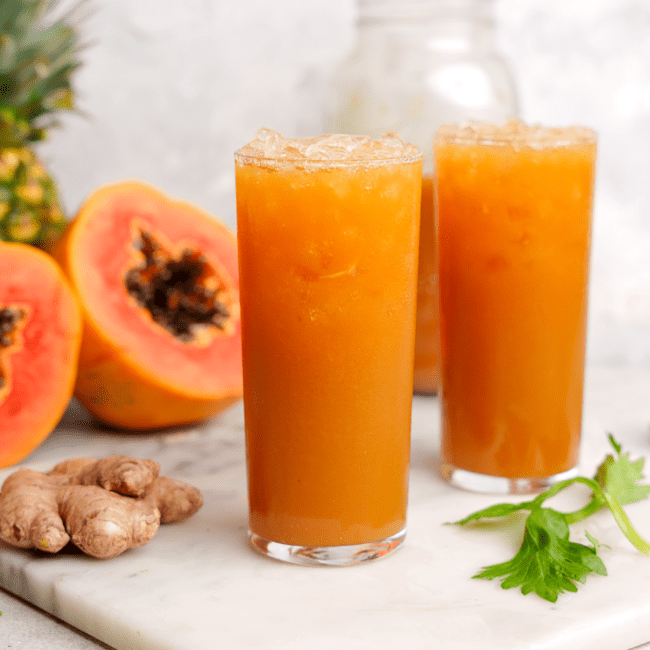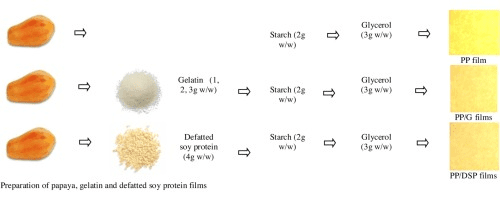PawPaw/Papaya ovary play a pivotal role in the fascinating journey of fruit development. Scientifically known as Carica papaya ovaries, these reproductive structures are crucial for the formation of the delectable and nutritious fruits that adorn PawPaw/Papaya trees.
PawPaw/Papaya (Carica papaya) is renowned for its succulent and vibrant fruits, and at the heart of this botanical marvel is the ovary. The ovary is the basal part of the female reproductive organ, the pistil, situated at the center of the flower. It is here, within the PawPaw/Papaya ovary, that the magic of fruit formation begins.
Within the PawPaw/Papaya flower, the ovary is typically located at the base of the pistil, surrounded by other floral structures such as petals, sepals, and stamens. The ovary is often pear-shaped and contains one or more ovules, the potential seeds of the future fruit. The botanical intricacies within the ovary set the stage for the intricate process of fertilization and fruit development.
The primary function of the PawPaw/Papaya ovary is to house and protect the ovules, which, once fertilized, transform into seeds. During the pollination process, pollen is transferred from the male reproductive organ (stamen) to the stigma, initiating a journey down the pistil to reach the ovary. The fertilization of the ovule within the ovary marks the beginning of fruit development.
As fertilization occurs, the PawPaw/Papaya ovary undergoes significant changes. It begins to swell and develop into the fruit we recognize. The surrounding floral structures, such as the petals, sepals, and stamens, often wither and fall away, leaving the maturing ovary as the central feature of the developing fruit.
The transformation of the PawPaw/Papaya ovary into a mature fruit involves complex biochemical processes. Hormones like auxins and gibberellins play crucial roles in cell division, elongation, and the conversion of the ovary’s tissues into the fleshy, flavorful pulp we enjoy. The seeds within the ovules contribute to the fruit’s texture and act as carriers of genetic information for future generations of PawPaw/Papaya plants.
From a culinary perspective, the PawPaw/Papaya ovary is the source of the delectable and nutritious fruit that is cherished worldwide. Rich in vitamins, minerals, and enzymes, PawPaw/Papaya fruits derived from the ovary offer a burst of flavor and a plethora of health benefits. Whether enjoyed fresh, in smoothies, or as part of savory dishes, the contribution of the PawPaw/Papaya ovary to our culinary experiences is undeniable.
Beyond its botanical importance, the PawPaw/Papaya ovary holds cultural significance in various regions. In some traditions, extracts from PawPaw/Papaya ovaries are utilized for their potential therapeutic properties. Additionally, the symbolism of the ovary in the life cycle of the plant carries cultural meaning, often intertwined with fertility, growth, and abundance.
The PawPaw/Papaya ovary is a marvel of nature, orchestrating the intricate dance of pollination, fertilization, and fruit maturation. As we relish the delicious fruits borne from this botanical masterpiece, let us appreciate the role of the PawPaw/Papaya ovary in providing not just culinary delights but also contributing to the perpetuation of this tropical plant species.
From the allure of its anatomy to the richness of its symbolism, the PawPaw/Papaya ovary invites us to marvel at the wonders of nature and the interconnectedness of life.
The Economic Importance and Uses of PawPaw/Papaya Ovary
1. Fruit Production and Agriculture: The PawPaw/Papaya ovary is the precursor to the development of the iconic fruits. Its role in fruit production is fundamental to the agriculture industry. Farmers cultivate PawPaw/Papaya plants for the yield of these fruits, contributing to the global fruit market.
2. Food Industry: PawPaw/Papaya ovaries are a valuable source of raw material for the food industry. The fruits derived from these ovaries are processed into various products such as juices, jams, and dried snacks. The culinary versatility of PawPaw/Papaya ovaries enhances their economic importance in food production.
3. Pharmaceutical and Medicinal Uses: Extracts from PawPaw/Papaya ovaries are explored for their potential medicinal properties. Compounds found in the ovaries may have anti-inflammatory, antioxidant, and digestive benefits. Pharmaceutical industries may utilize these extracts in the development of herbal supplements or medicines.
4. Cosmetic and Skincare Industry: PawPaw/Papaya ovary extracts, known for their enzymatic properties, are incorporated into cosmetic and skincare products. These extracts contribute to exfoliation and skin renewal, making them valuable ingredients in creams, lotions, and facial masks.
5. Traditional Medicine: In certain cultures, PawPaw/Papaya ovaries are used in traditional medicine for their perceived health benefits. Infusions or extracts from the ovaries may be employed to address digestive issues, inflammation, or skin conditions, showcasing their cultural significance.
6. Agricultural Research and Breeding: PawPaw/Papaya ovaries play a crucial role in agricultural research and breeding programs. Understanding the genetics and characteristics of ovaries contributes to the development of improved PawPaw/Papaya varieties with desirable traits, such as disease resistance or enhanced fruit quality.
7. Waste Utilization: Residual parts of PawPaw/Papaya ovaries, such as peels and seeds, can be utilized for waste reduction. These by-products may be processed into animal feed, organic fertilizers, or even biodegradable materials, contributing to sustainable waste management practices.
8. Export and Trade: PawPaw/Papaya fruits, stemming from the ovaries, are important commodities in international trade. Countries with favorable climates for PawPaw/Papaya cultivation engage in the export of fresh fruits or processed products, contributing to economic growth and trade balances.
9. Culinary Tourism: Regions known for their PawPaw/Papaya cultivation, driven by healthy ovaries, may attract culinary tourists. The presence of fresh, locally grown fruits enhances the gastronomic appeal of these destinations, positively impacting local economies.
10. Job Creation: The cultivation, harvesting, and processing of PawPaw/Papaya ovaries create employment opportunities within the agricultural, food processing, and pharmaceutical industries. The economic ripple effect extends to logistics, marketing, and distribution sectors.
Read Also: The PawPaw/Papaya Pistil: Economic Importance, Uses, and By-Products
The Products and By-products Derived From PawPaw/Papaya Ovary
1. Fruit Pulp and Juices: The ripe ovaries of PawPaw/Papaya are processed to extract the juicy pulp, which is used to make fruit juices. The pulp is extracted by crushing the ovaries and separating the juice from the seeds and fibers. PawPaw/Papaya juices are rich in vitamins and are enjoyed for their refreshing taste.

2. Jam and Preserves: PawPaw/Papaya ovaries can be cooked down with sugar to make jams and preserves. The ovaries are peeled, diced, and cooked with sugar until they reach a thick consistency. PawPaw/Papaya jam is a popular spread for toast and pastries.

3. Enzyme Extracts: Enzymes extracted from PawPaw/Papaya ovaries, such as papain, are used in various industries. These enzymes are extracted through a process of maceration and filtration. Papain is used in the food industry as a meat tenderizer and in the textile industry for fabric softening.
4. Cosmetic Ingredients: PawPaw/Papaya ovary extracts are used in cosmetic products for their skin-renewing properties. These extracts are obtained through solvent extraction or steam distillation. PawPaw/Papaya extract is added to creams, lotions, and facial masks for its exfoliating and moisturizing effects.

5. Animal Feed Additives: Residual parts of PawPaw/Papaya ovaries, such as peels and seeds, can be processed into animal feed. The ovaries are dried and ground into a powder before being mixed with other feed ingredients. PawPaw/Papaya ovary powder provides supplementary nutrition for livestock and poultry.
6. Organic Fertilizers: PawPaw/Papaya ovaries, along with other plant residues, can be composted to produce organic fertilizers. The ovaries are mixed with organic materials such as leaves and manure and allowed to decompose. The resulting compost enriches the soil with nutrients, improving plant growth.
7. Biodegradable Packaging: Fibers extracted from PawPaw/Papaya ovaries can be processed into biodegradable packaging materials. The fibers are extracted through a process of maceration and drying. PawPaw/Papaya ovary fibers are used to make packaging products such as trays and containers, offering an eco-friendly alternative to conventional plastics.

8. Medicinal Extracts: PawPaw/Papaya ovaries contain compounds with potential medicinal properties. Extracts are obtained through solvent extraction or maceration. These extracts are studied for their anti-inflammatory, antioxidant, and digestive benefits, and may be used in herbal supplements or traditional medicine.
9. Art and Craft Materials: Dried PawPaw/Papaya ovaries can be used for artistic and craft purposes. The ovaries are dried and preserved before being incorporated into crafts such as decorations and ornaments. PawPaw/Papaya ovary decorations showcase the natural beauty of the fruit and add a tropical touch to artistic creations.
10. Biogas Production: PawPaw/Papaya ovaries, along with other organic waste, can be used to produce biogas through anaerobic digestion. The ovaries are mixed with water and organic matter in a digester, where bacteria break down the material to produce methane gas. PawPaw/Papaya ovary biogas can be used as a renewable energy source for cooking and heating.

Read Also: 17 Medicinal Health Benefits Of Aquilegia canadensis (Eastern Red Columbine)
Frequently Asked Questions (FAQ’s) About PawPaw/Papaya Ovary
1. What is a PawPaw/Papaya ovary?
A PawPaw/Papaya ovary is a part of the female reproductive structure of the PawPaw/Papaya plant. It is located at the base of the flower’s pistil and contains ovules, which develop into seeds after fertilization.
2. How does the PawPaw/Papaya ovary contribute to fruit formation?
The PawPaw/Papaya ovary plays a crucial role in fruit development. After pollination, the ovules within the ovary are fertilized, initiating the process of fruit formation. The ovary swells and matures into the fruit we recognize, enclosing the seeds within.
3. What are the nutritional benefits of PawPaw/Papaya ovaries?
PawPaw/Papaya ovaries are rich in vitamins, minerals, and enzymes. They contribute to the nutritional value of PawPaw/Papaya fruits, providing essential nutrients such as vitamin C, vitamin A, potassium, and dietary fiber.
4. Can PawPaw/Papaya ovaries be consumed directly?
While PawPaw/Papaya ovaries are edible, they are typically consumed as part of the whole fruit rather than on their own. PawPaw/Papaya fruits are enjoyed for their sweet and tropical flavor, with the ovary contributing to the overall taste and texture.
5. Are there any health benefits associated with PawPaw/Papaya ovaries?
PawPaw/Papaya ovaries contain compounds with potential health benefits, including antioxidant and digestive properties. Some studies suggest that extracts from PawPaw/Papaya ovaries may have anti-inflammatory effects and aid in digestion.
6. How are PawPaw/Papaya ovaries harvested?
PawPaw/Papaya ovaries are typically harvested when the fruits reach maturity. They are carefully plucked from the flower’s pistil, ensuring that they are ripe and ready for consumption or further processing.
7. Can PawPaw/Papaya ovaries be used in cooking or recipes?
PawPaw/Papaya ovaries can be used in various culinary applications. They are commonly included in fruit salads, smoothies, desserts, and savory dishes. PawPaw/Papaya ovaries add sweetness and tropical flavor to recipes.
8. Are there any traditional or cultural uses of PawPaw/Papaya ovaries?
In some cultures, extracts or infusions from PawPaw/Papaya ovaries are used in traditional medicine for their perceived health benefits. PawPaw/Papaya ovaries may also hold cultural significance in rituals or ceremonies.
9. How should PawPaw/Papaya ovaries be stored to maintain freshness?
PawPaw/Papaya ovaries should be stored in a cool, dry place away from direct sunlight. They can also be refrigerated to prolong freshness. It’s best to consume PawPaw/Papaya ovaries promptly to enjoy their optimal flavor and nutritional benefits.
10. Are there any precautions to consider when consuming PawPaw/Papaya ovaries?
While PawPaw/Papaya ovaries are generally safe to consume, individuals with allergies to latex or certain proteins may experience allergic reactions. It’s advisable to consult with a healthcare professional if you have any concerns before incorporating PawPaw/Papaya ovaries into your diet.
Read Also: The Different Types of Fertilizers and How they Work

